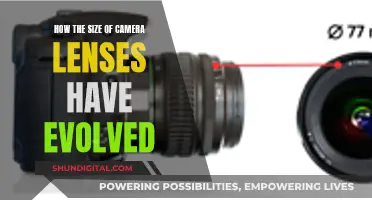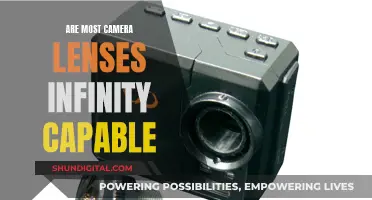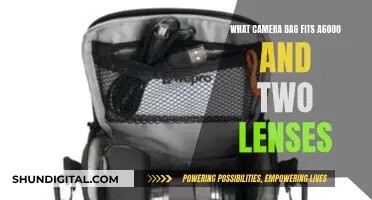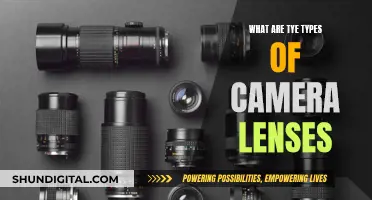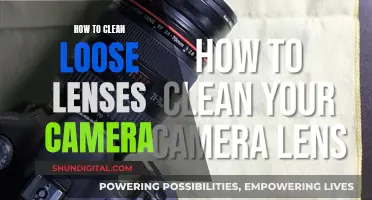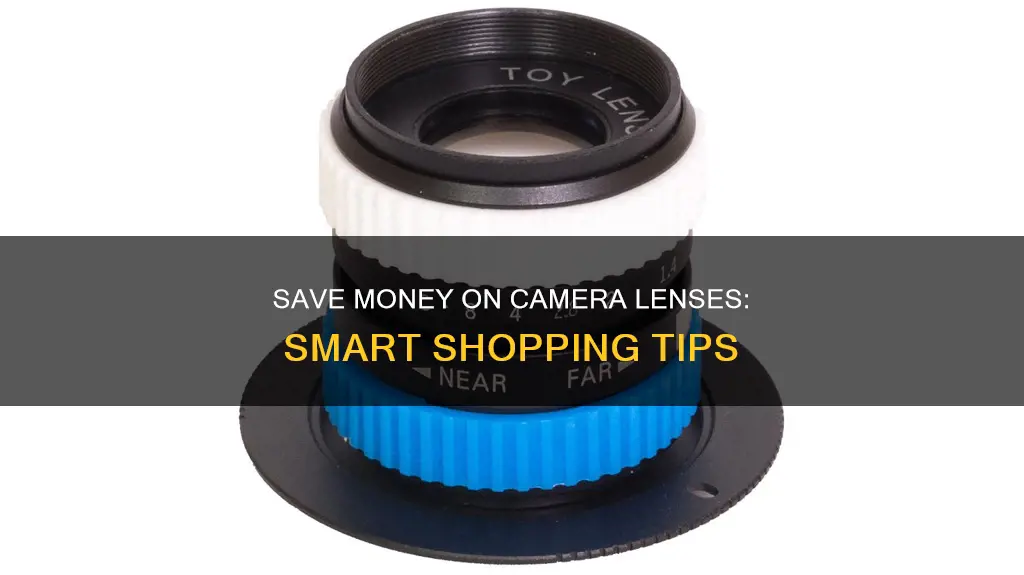
Camera gear is notoriously expensive, and it can be challenging to purchase new equipment without breaking the bank. However, there are several strategies you can employ to save money on camera lenses. Here are some tips to get you started:
- Buy used or refurbished lenses: Cameras and lenses are built to last, and as long as they have been well-maintained, they can offer excellent value when purchased second-hand. You can find used gear on sites like eBay, Facebook Marketplace, or dedicated photography sites like B&H Used, which offer warranties and return policies.
- Consider third-party lenses: Brands like Sigma, Tokina, and Tamron offer high-quality lenses at more affordable prices than the leading camera manufacturers. These lenses often rival the quality of their more expensive counterparts and can be a great way to save money.
- Look for discounts and deals: Keep an eye out for sales and discounts on photography gear. Retailers like Amazon frequently offer promotions, and certain days like Black Friday and Cyber Monday are known for their massive gear discounts. You can also subscribe to photography blogs and websites, which often post deals and promotions.
- Buy before or after a new release: Camera manufacturers typically follow a regular product release cycle. By purchasing just before or after a new model is released, you can take advantage of price cuts on previous versions. Additionally, current owners will often sell their old gear, leading to great deals on second-hand lenses.
- Rent or borrow lenses: If you only need a lens for a specific project or trip, consider renting or borrowing it instead of buying. This can be a more cost-effective option, especially for specialty lenses that are rarely used.
- Sell your old gear: As you upgrade your equipment, consider selling your old lenses and camera bodies. This can help offset the cost of new purchases and ensure that your unused gear doesn't lose value over time.
- Upgrade slowly: Instead of rushing to buy the latest and greatest lens, take the time to master the one you have. By upgrading slowly and only when necessary, you'll save money and develop a deeper understanding of your equipment.
- Look for rebates: Many camera and lens manufacturers offer rebates that can save you a significant amount, especially when purchasing multiple items. Keep an eye out for these deals when planning your next purchase.
| Characteristics | Values |
|---|---|
| Buy second-hand | Save money by buying used or refurbished products |
| Know where to save and where to splurge | Spend more on lenses than camera bodies |
| Rent or borrow equipment | Rent gear for specific projects or to try before you buy |
| Buy from third-party brands | Save money by buying from third-party brands like Sigma or Tamron |
| Look for sales, discounts, and events | Wait for seasonal sales like Black Friday and Cyber Monday |
| Buy just before or after a new release | Previous models often receive a big price cut |
| Sell your old gear | Sell your old camera gear or other items to raise funds |
| Work more | Earn more money from your day job |
| Spend less | Cut down on non-essential expenses |
What You'll Learn

Buy second-hand
Buying Second-Hand Camera Lenses
The Benefits of Buying Second-Hand
There are many benefits to buying second-hand camera lenses. Firstly, it is a great way to save money, especially if you are on a tight budget. Research by credit provider Vanquis found that buying pre-owned items can result in significant savings, with one example being a North Face raincoat listed second-hand for £28, compared to its retail price of £205 – a saving of £177 or 86%.
Another benefit of buying second-hand is that you can gain access to premium brands at a fraction of the cost. Vanquis' research revealed that the biggest savings can be found when shopping for premium brands, with an average saving of around 70% across the items in their sample. This means that by buying second-hand, you can get your hands on high-quality camera lenses that may have been out of your price range when purchased new.
Additionally, buying second-hand is more sustainable and environmentally friendly. By purchasing a refurbished lens, you are giving it a new lease of life and preventing it from ending up in a landfill. This reduces the environmental impact of producing and disposing of new camera equipment.
Where to Buy Second-Hand Lenses
There are two main options for buying second-hand camera lenses: purchasing directly from a private seller or buying from a dedicated used camera company.
Private Sellers
Buying directly from a private seller, such as through auction websites like eBay, can save you a significant amount of money. You can often find out detailed information about the item's condition, usage, and any performance issues directly from the seller. However, it is important to exercise caution when buying from private sellers, as returning items can be more difficult if you change your mind or encounter problems.
Used Camera Companies
Used camera companies, on the other hand, offer a more reliable and trustworthy option. They thoroughly test each item to ensure it is in proper working condition before selling it. Some companies also offer returns under warranty if the item is faulty or breaks down. While these companies may be slightly more expensive, they provide peace of mind and often allow users to trade in their old equipment to further reduce costs.
Tips for Buying Second-Hand Lenses
When buying second-hand camera lenses, it is important to take certain precautions to ensure you get a good deal. Here are some tips to keep in mind:
- Test the equipment if possible, or ask for a video demonstration of it in full working order.
- Be cautious of deals that seem too good to be true – if it seems too cheap, there may be an issue with the item.
- Ask questions and do your research. Find out about the lens's history, how it was used, and any repairs or issues it has had.
- Request photographs of the lens to assess its condition and look for any signs of damage or wear and tear.
- Consider the return policy of the seller or company and any warranties or guarantees they offer.
- Factor in any shipping costs and insurance on postage when making your purchase.
- Remember that buying from a charity shop doesn't always mean buying second-hand – sometimes retailers donate new stock, so you can find new items at discounted prices.
- Utilise specialist resellers, especially for high-end or complex equipment like carbon fibre bike frames, to ensure an expert eye has checked the equipment and reduced the risk of hidden problems.
Final Thoughts
In conclusion, buying second-hand camera lenses can be a great way to save money, access premium brands at a fraction of the cost, and contribute to sustainability. By following the tips outlined above and exercising caution, you can make informed purchases and enjoy your photography journey without breaking the bank.
Understanding Camera Lenses: A Beginner's Guide to Reading Them
You may want to see also

Know when to save and when to splurge
Knowing when to save and when to splurge is a key part of saving money on camera lenses. While it's important to stick to a budget, it's also crucial to understand which pieces of gear are worth spending a little extra on.
Camera bodies, for example, tend to lose value quickly due to wear and tear, new models being released, and advancements in technology. As such, it's usually a good idea to save money when purchasing a camera body, especially if you're an amateur photographer. Buying used or refurbished camera bodies can be a great way to save money, and they often come with warranties and return policies from reputable sellers.
On the other hand, lenses are a different story. Investing in a good-quality lens can save you money in the long run, as they don't tend to lose their value as quickly and will last longer. Spending a bit more on a lens will ensure sharper, distortion-free optics and can even offer specialty controls, silent autofocus, or vibration reduction capabilities. If you're looking to take high-quality photos, investing in a good lens is a wise decision.
Another area where you may want to splurge is on specialty lenses for specific types of photography, such as super-telephoto zooms for wildlife photography. These lenses can be quite expensive, but if you need them for your work, they can be worth the investment.
That being said, there are also ways to save money on lenses. Third-party lenses from companies like Sigma, Tokina, and Tamron offer high-quality options at more affordable prices. Additionally, renting or borrowing lenses for specific projects or trying them out before purchasing can help you save money and ensure you're getting the right lens for your needs.
In summary, when it comes to saving and splurging on camera gear, it's important to strike a balance. Save money where you can, especially on camera bodies and accessories, but don't skimp on lenses as they will have a bigger impact on the quality of your photos.
The Evolution of Point-and-Shoot Cameras: Multiple Lenses, Many Possibilities
You may want to see also

Rent or borrow equipment
Renting or borrowing camera equipment is a great way to save money, especially if you're looking to try out a new lens or camera before committing to buying it. It's also a good option if you need a specific piece of equipment for a particular shoot or project. Here are some things to keep in mind:
Renting Camera Equipment:
- Cost: Renting gear will incur a cost, which can vary depending on the rental company and the equipment you choose. Some companies charge a daily rate, while others have a system where the fee slowly increases over time.
- Variety: Rental services offer a wide variety of lenses and cameras to choose from, allowing you to try out different brands and focal lengths.
- Protection Plans: Some companies offer protection plans or damage waivers for an additional fee, which can reduce your liability in case of any accidental damage to the equipment.
- Shipping: Many rental companies provide shipping services, making it convenient to receive and return the equipment. However, shipping costs may apply, and some companies offer free shipping for orders above a certain amount.
- Pick-up and Drop-off: Some rental services allow you to pick up and drop off the equipment at their physical locations or partner stores, such as UPS or FedEx locations.
- Rental Period: You can usually choose the rental period that suits your needs, and some companies offer the option to extend the rental if needed.
- Try Before You Buy: Renting allows you to try out different lenses and cameras to see which ones work best for you before making a purchase decision.
Borrowing Camera Equipment:
- Cost-Effective: Borrowing from a friend or peer can be a cost-effective way to access camera equipment, especially if you only need it for a short period.
- Flexibility: Borrowing provides flexibility, as you may be able to negotiate the loan period and terms directly with the owner.
- Insurance: When borrowing, ensure that the equipment is insured. Without insurance, you may be liable for any damage or loss that occurs during the loan period.
- Testing and Reliability: Borrowing from a friend or peer may not come with the same testing and reliability guarantees as renting from a reputable company.
- Building Relationships: Borrowing equipment from peers or fellow creatives can be a great way to build relationships and connect with others in the industry.
Whether you choose to rent or borrow camera equipment, it's essential to consider your specific needs, budget, and the level of flexibility and convenience you require.
Choosing Camera Lenses: A Guide to Perfect Photography
You may want to see also

Buy from third-party brands
Buying from Third-Party Brands
Third-party lenses are a great way to save money without compromising on quality. Companies like Sigma and Tamron offer high-quality lenses at significantly lower prices than first-party brands. These lenses can rival the quality of those made by original camera manufacturers and are often a much more affordable option.
For example, the Sony 24-70mm f/2.8 GM lens retails new for $1998, while the Sigma 24-70mm f/2.8 DG DN Art is priced at $1019, offering similar performance for almost half the price. Another great option is the Tamron 17-70mm f/2.8 Di III-A VC RXD, which comes in at around $800. These third-party lenses provide fantastic value for money and are worth considering if you're looking to save some cash.
In addition to the significant cost savings, third-party brands sometimes offer unique products that are difficult or impossible to find from original manufacturers. For instance, soft-focus lenses can be a great option for those seeking a different aesthetic.
When it comes to camera batteries, off-brand options can also provide significant savings. While original batteries can be extremely pricey, especially when you need multiple extras for events or weddings, off-brand alternatives are much cheaper. Even though they may not hold their charge for as long, the savings make them well worth considering, as you can buy multiple batteries for the price of a single original one.
However, it's important to be selective when choosing which items to buy from third-party brands. For memory cards, it's recommended to stick with well-known brands like SanDisk and Lexar, as off-brand memory cards are more prone to errors and failures, which could result in losing your precious photos.
Overall, buying from third-party brands is a great strategy to save money on camera lenses and certain accessories. By opting for these alternatives, you can often find similar quality products at much more affordable prices, allowing you to build your dream photography kit without breaking the bank.
EF Lenses: Compatible with Crop Sensor Cameras?
You may want to see also

Look for sales and discounts
One of the most effective ways to save money on camera lenses is to look for sales and discounts. If you're not in a rush to buy, waiting for seasonal sales can help you save a significant amount of money. These include Amazon Prime Day, Black Friday, Cyber Monday, Bank Holiday sales, and post-Christmas January sales. Many camera companies also offer discounts or cashback offers during these times, so it's worth keeping an eye out.
In addition to online sales, photography conventions and events can be a great place to find discounts on camera lenses. Major camera brands often have stalls at these events and may offer exclusive discounts on purchases. This gives you a chance to try out the equipment and get hands-on advice from knowledgeable reps. Some popular events to check out include ClickCon in the US and The Photography Show in the UK.
It's also worth keeping an eye on refurbished and second-hand sales. The Canon Direct Store, for example, offers refurbished cameras and lenses with a 1-year warranty. B&H is another reputable retailer that buys and sells used camera gear, providing an easy and low-risk way to sell your gear or purchase pre-owned items.
Lastly, don't forget to check out local camera stores, which often have knowledgeable staff who can provide non-pushy advice. They may also offer payment plans that allow you to take the gear home and pay in instalments, though it's important to read the fine print and check the interest rate.
By taking advantage of sales, discounts, and second-hand options, you can save a significant amount of money when purchasing camera lenses.
Camera Lenses: Radioactive or Not?
You may want to see also
Frequently asked questions
Buying camera equipment can be expensive, but there are a few ways to save money on lenses. Firstly, consider buying second-hand equipment. Buying directly from a seller can save you a lot of money, but it's important to thoroughly test the equipment before purchasing. You can also buy from a dedicated used camera company, which is more reliable but may be more expensive. Another option is to buy from third-party brands, which often have cheaper lenses that are still high quality. You can also save money by buying your lens just before or after a new release, as previous models often receive a big price cut.
It's important to work with your current gear and understand its limitations before buying something new. Ask yourself what frustrates you about your current setup, and what would make your photography life easier. For example, do you wish your lens would shoot wider or zoom in closer? If you're still unsure, you could try renting or borrowing the lens you're interested in to give it a test run before committing to a purchase.
Expensive lenses tend to hold their value, so they're a good investment and will last you a long time. They also offer additional features such as specialty controls, silent autofocus, and vibration reduction. However, you can still get some wonderful artistic results from a cheap lens by compensating with the right lighting and framing.
Keep an eye out for sales and discounts, especially during seasonal events like Black Friday and Cyber Monday. You can also subscribe to photography blogs and websites, which often post deals on camera equipment. If you're buying online, it's worth signing up for a credit card with a good rewards system, as you can get points or money back on your purchase.


